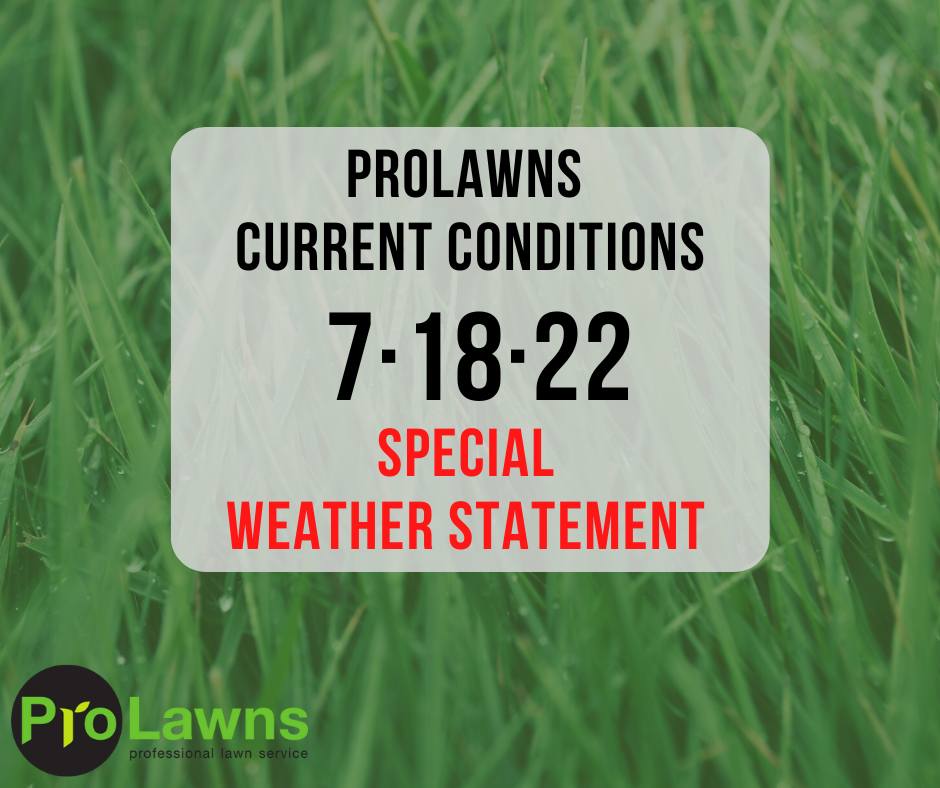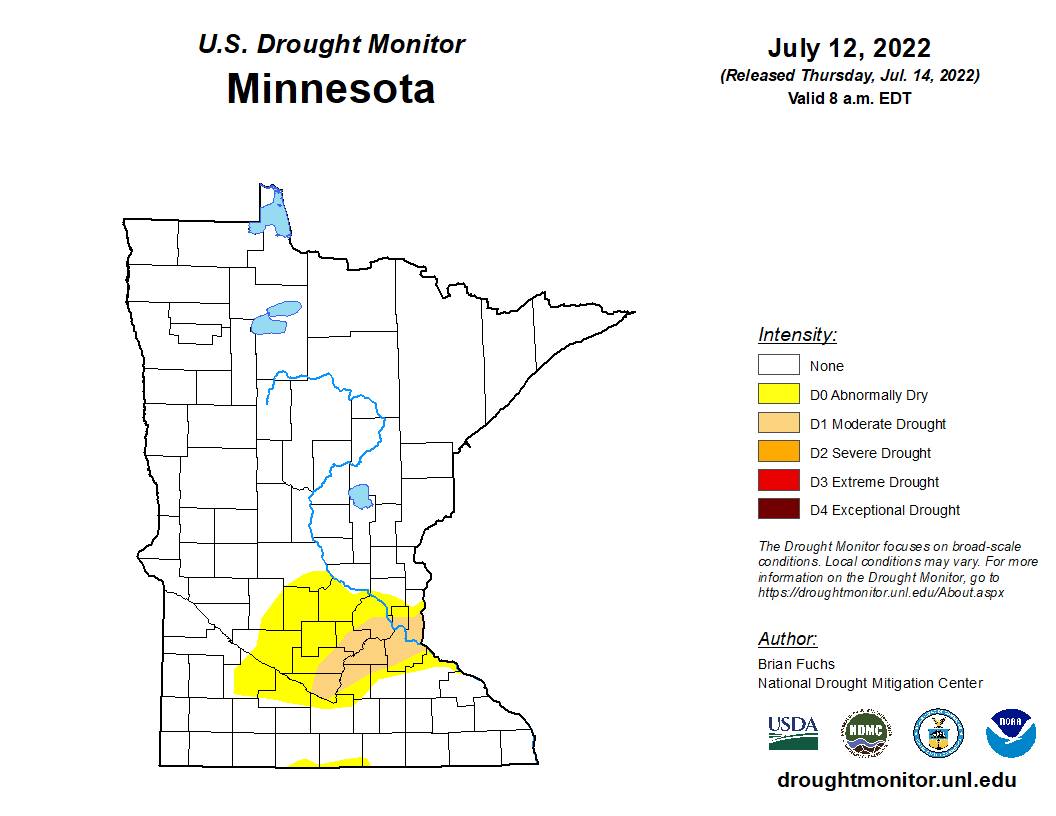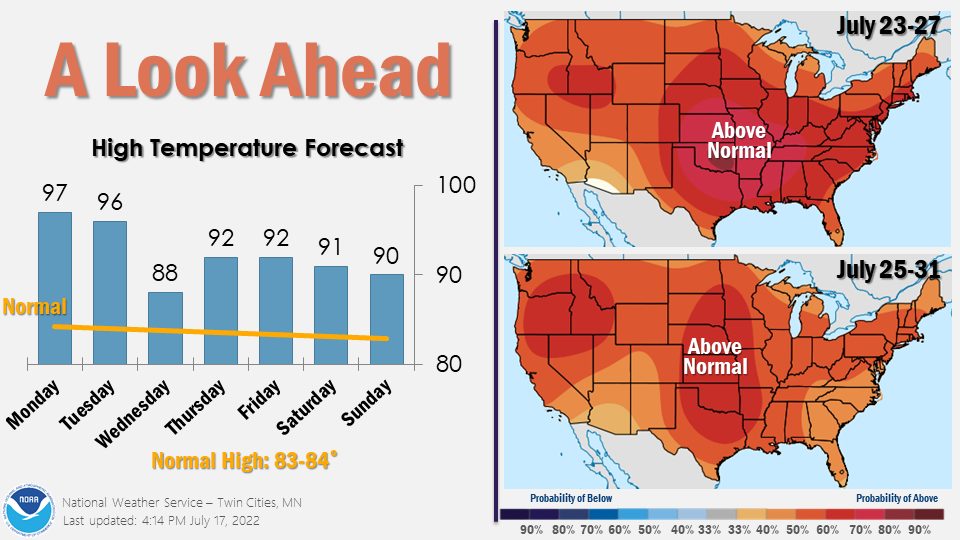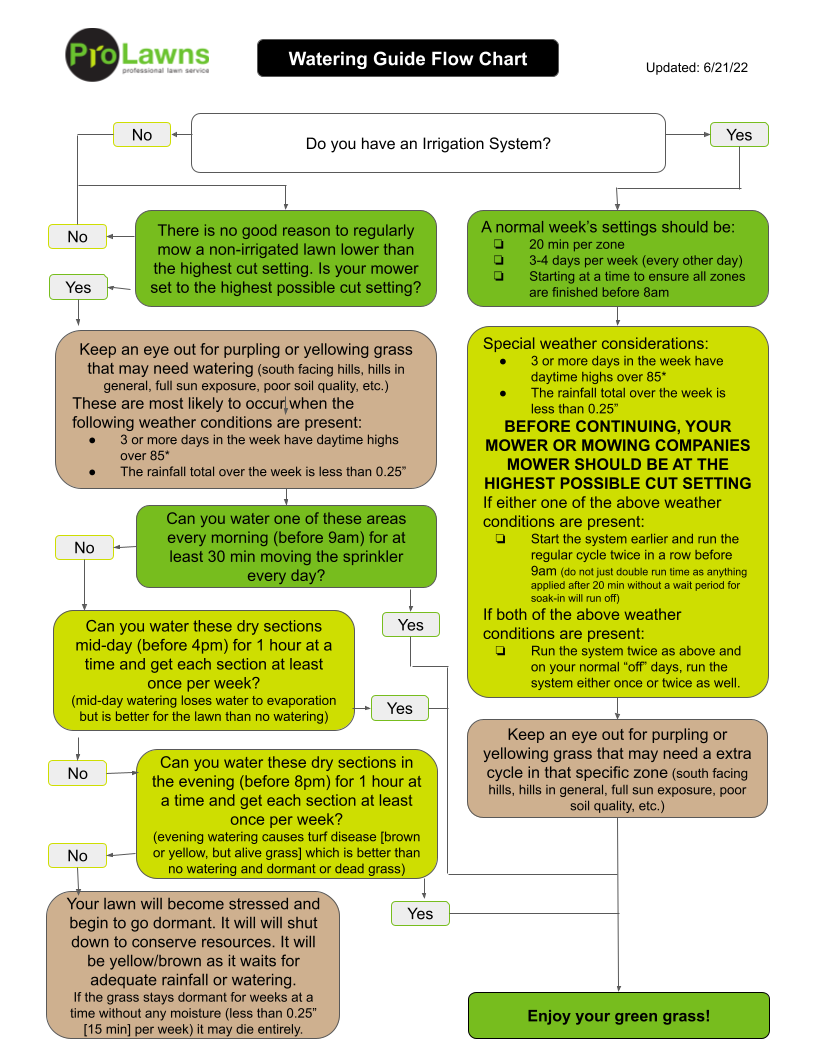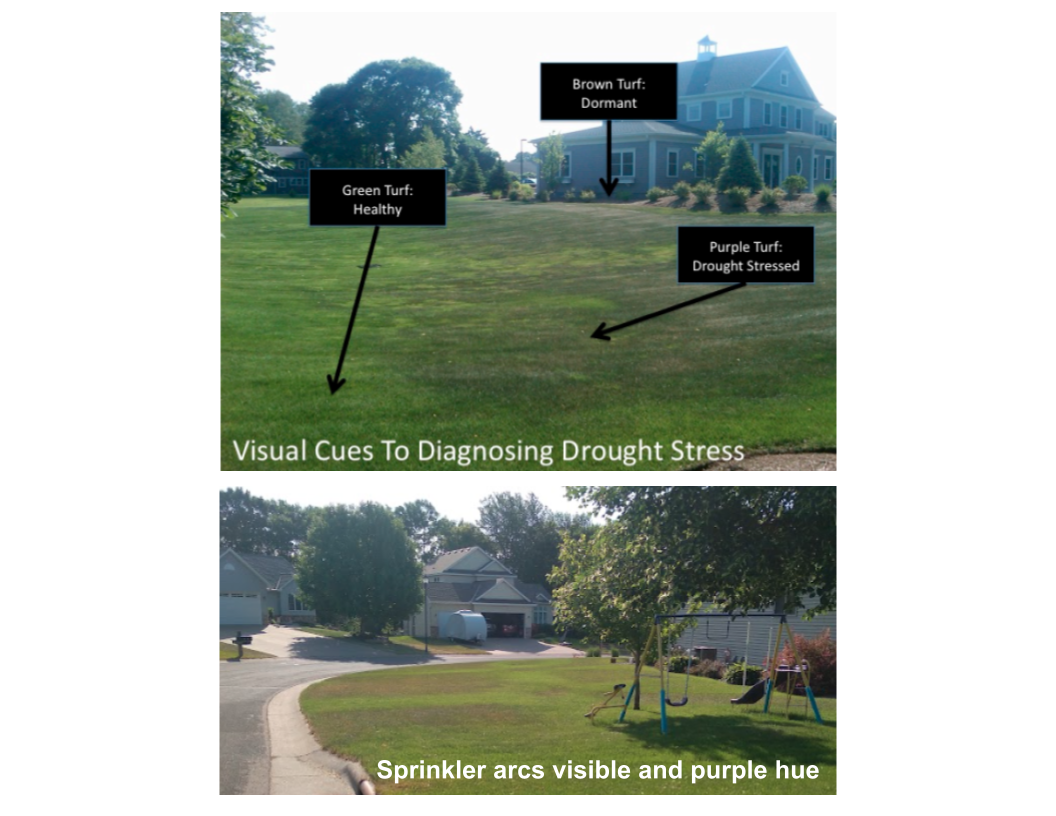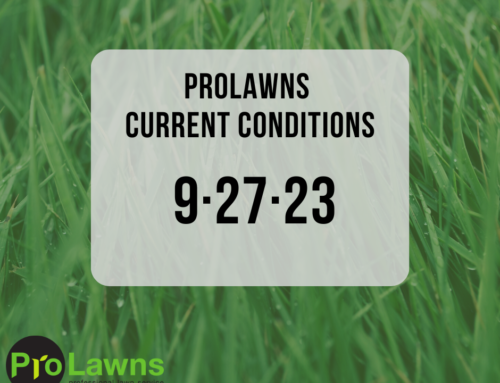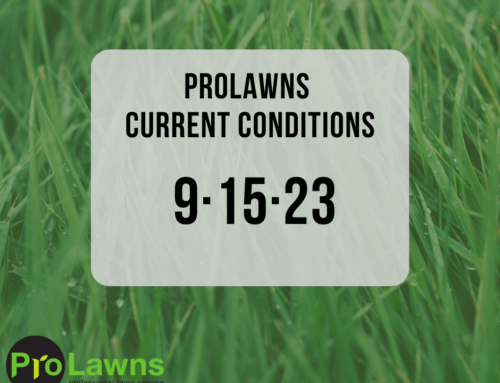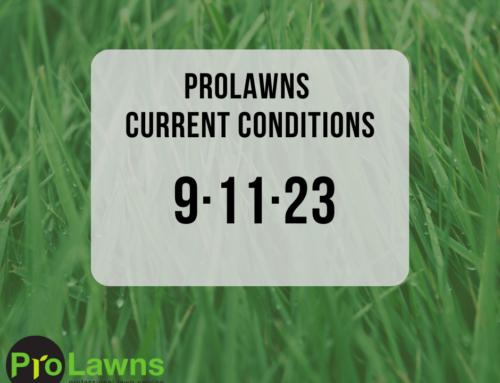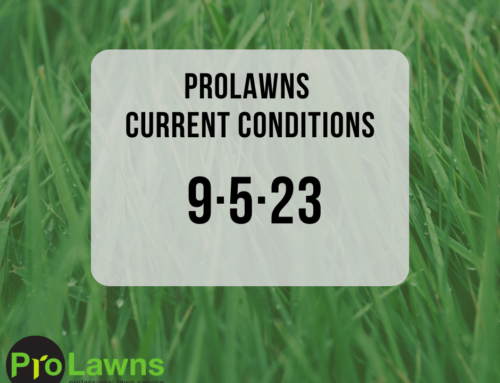Here’s where the mowing and watering practices you’ve been following will be exhibit their results; good and bad. We’re about to enter a very tough stretch for lawns. Weeks of very hot conditions and we’re going into it with a significant deficit of rainfall (we’re in a drought).
Water as much as you can (correctly) and mow as high as possible (if needed at all) before our cities start implementing watering bans like they did last year.
What we’re noticing:
- It’s very hot and dry. We’re in stages 1 and 2 of official drought conditions. At least the rest of the month will be well over normal temperatures. It’s been tough for lawns this summer and is about to get much tougher. Source | Source
- The hot weather weeds are quite active. The weeds have also “hardened off” with the conditions – they’re in varying states of dormancy and which makes them less receptive to take in weed control products.
- Rust disease; are your shoes and mower wheel turning orange after crossing the lawn? That’s a disease called rust. It’s essentially harmless to the grass but annoying. It comes with the hot weather and with turf that’s mowed high (as all of ours should be). When environmental conditions change it will go away.
What we’re doing:
- We’ve switched our weed control product to a more aggressive one with two different modes of action to combat the stubborn hot weather weeds
- We’ve also switched our fertilizer to a high potassium blend that aids in stress relief. It is also a non-burning slow release granular that waits for irrigation and growth to activate. Lastly, it has a high iron content that improves color without causing any stress associated with growth this time of year.
What you can be doing:
- Mowing:
- DO NOT MOW if you don’t have an irrigation system. I haven’t mowed my non-irrigated lawn for 3 weeks and don’t plan on mowing it for the next two. It’s a bit shaggy but it’s green.
- Shady areas of lawns where you’ve been able to water may be an exception to this mowing rule. Mow this areas if needed at the HIGHEST POSSIBLE HEIGHT setting.
- If you have an irrigation system (and have it adjust properly for our conditions) it’s possible regular mowing may still be necessary but you or your mowing company need to have the mower set at the HIGHEST POSSIBLE SETTING.
- DO NOT MOW if you don’t have an irrigation system. I haven’t mowed my non-irrigated lawn for 3 weeks and don’t plan on mowing it for the next two. It’s a bit shaggy but it’s green.
- Watering: You need to adjust your watering or you lawn will decline. See: Watering Guide Flow Chart
- Non-irrigated lawns need to focus on the hot/dry spots (purpling/yellowing). Parts of your lawn may go dormant and consider letting them go for a few weeks to see if conditions improve. But if conditions do not improve (like they didn’t last year), those areas will still need watering to stay alive.
- Irrigation systems should be run twice daily for the next couple weeks (maybe longer if conditions don’t improve). 20 minutes per zone. Then again immediately after for 20 min per zone. NOT ONCE IN THE MORNING AND ONCE IN THE EVENING AND NOT JUST DOUBLING THE TIME
- This is 40 total minutes but ensure you “cycle and soak”. Running a zone for 40 minutes straight will waste about 10-20 minutes of water. The ground will be saturated and irrigation beyond 20 minutes at a time will run off. You need to run a 20 min cycle then run it again which gives the ground time to absorb the water.
- Adjust your start time so it completes the two cycles by 7-8am. There is no need to run a “cool-down” cycle mid-day plus it wastes a lot of water to evaporation. Running your system between 4pm and midnight will cause unnecessary turf disease and stress with the hot temperatures we have.
- Water as much as you can (correctly) and mow as high as possible (if needed at all) before our cities start implementing watering bans like they did last year.

